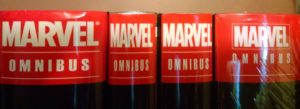 A week into this countdown and accompanying annotation and we’ve finally reached the Top 20 Most-Wanted Marvel Omnibuses from the 2016 Secret Ballot by Tigereyes. I covered #25-21 in the last installment.
A week into this countdown and accompanying annotation and we’ve finally reached the Top 20 Most-Wanted Marvel Omnibuses from the 2016 Secret Ballot by Tigereyes. I covered #25-21 in the last installment.
This installment includes two books of fan-favorite material, a long shot second volume to an orphaned first, the long-ignored origin of a hero who has two films to his name, and the highest-ranking vote from my own ballot! There’s a solid chance I would buy all five of these books.
If you have any extra information to add about the probable runs or opinions to share about the comics therein, please leave a comment! Even when it comes to X-Men, I don’t know (or remember!) everything about these books – and you might.
Do you own an oversized tome of your favorite character’s comic books? My Marvel Omnibus & Oversized Hardcover Guide is the most comprehensive tool on the web for tracking Marvel’s hugest releases – it features details on every oversize book, including a rundown of contents and if the volume is still readily available for purchase.
![]()
#20. New Warriors, Vol. 2 (or 3)
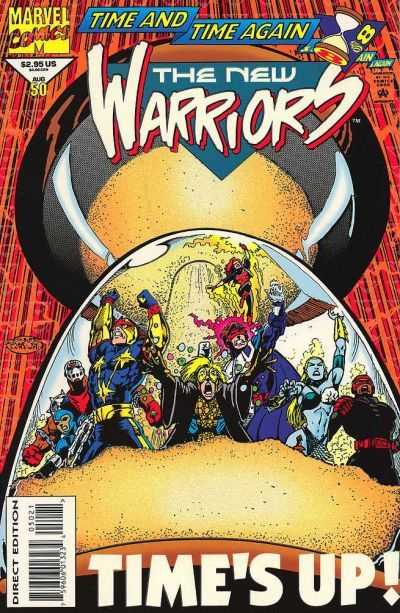 Last Year’s Rank: #24
Last Year’s Rank: #24
Probable Contents: New Warriors #27-50 or 53 & Annual 3-4, X-Force #32-33, Nova #6-7, Night-Thrasher #11-12
Possible Contents: The addition of some or all of Night Thrasher (1992) #1-4 (after NW #27), Night Thrasher (1993) #1-10 (starting after NW #37), Nova #1-5 & 8-12 (starting after NW #42), but probably not Justice (1994) #1-4 (after NW #51)
What is it? Team of D-list youngsters combined to sell comics; two years into their run finds them facing off against one-off villains and threats borrowed from other titles.
The Details:
The New Warriors was Marvel’s attempt to profit on a group of rarely-used younger characters by branding them as a team. It wasn’t their worst idea, but that’s largely down to Fabian Nicieza.
That technique is actually opposite the traditional Marvel formula and much more like DC’s approach to teams. With Marvel, lasting teams either originate their own characters (Fantastic Four, X-Men) or began by merging other popular characters (Avengers, Defenders).
New Warriors gave Marvel a teen team other than New Mutants, and just as that group was junior to X-Men there was occasionally the idea that New Warriors were junior to The Avengers. That was purely an unofficial designation, despite a pair of Warriors later graduating to the A-squad.
The weak spot of such an assembled team is that it has none of its own continuity, mythology, rogue’s gallery – or even much of a reason to exist. That shows in this run, in which the Warriors flounder through a series of forgettable storylines that frequently borrow from other comics for their central conflict (Spider-Man, Cloak & Dagger, Uncanny X-Men). That it worked at all is largely a testament to the powers of Fabian Nicieza, who scripted this title from its debut through issue #53. As he did on the X-Force run featured earlier in this countdown, he found a way to emphasize what made these characters real even as they battled inane threats. That mattered more than having name brand villains (spoiler: there are none in this run).
Given the speculating environment of the 90s, New Warriors was a seller – enough that it spun off two other ongoing series and a number of mini-series. That created enough continuity around the book to close this run on a multi-title crossover, “Time and Time Again,” focused on a 1970s Nova villain named Sphinx.
With #53 as an obvious break-point due to Nicieza’s departure, this book is a projected 35 issues in length once you account for crossovers. That leaves room to collect some of the spinoff books – Night Thrasher’s mini-series is an obvious choice. Less of a sure thing are the beginnings of ongoings from Night Thrasher and Nova, which would otherwise linger uncollected, and a Justice mini-series that could instead kick off a theoretical third omnibus. Not all of that could fit, but some of it might make sense depending on a map for the third volume.
Chances we see this in 2017? ![]() The first volume of this material in 2013 was not an especially stronger seller. To hope for a second volume when we’d still need a third to finish things off seems like insanity. Plus, New Warriors have very little profile at the moment, compared to a Marvel Now launch around the time of the prior volume.
The first volume of this material in 2013 was not an especially stronger seller. To hope for a second volume when we’d still need a third to finish things off seems like insanity. Plus, New Warriors have very little profile at the moment, compared to a Marvel Now launch around the time of the prior volume.
Want to read it right now? You’ll need some floppies – this run has yet to hit collected editions. Visit the New Warriors Guide for more details.
![]()
#19. Thunderbolts (1997), Vol. 1 AKA by Kurt Busiek & Mark Bagley
Last Year’s Rank: #20
Probable Contents: The issues from the first three Thunderbolts Classic volumes – Thunderbolts #1-22, -1 (AKA Distant Rumblings), 0, & Annual 1997, The Incredible Hulk (1968) #449, Spider-Man Team-Up (1995) #7, Tales of the Marvel Universe (1997) #1, Heroes for Hire #7, Avengers #12, and Captain America/Citizen V ’98 Annual 1998.
Possible Contents: This volume could wrap up Busiek’s run as writer by extending to #33; there’s no hard-and-fast “three Classics per omni” rule as there is with Masterworks.
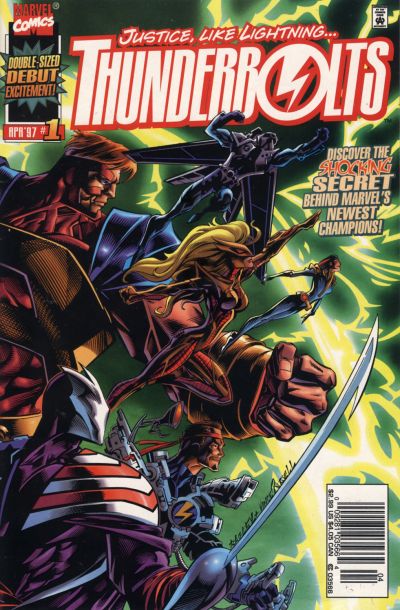 What is it? A wildly popular run of villains masquerading as heroes in the absence of the Avengers written by Kurt Busiek and Mark Bagley in their early prime.
What is it? A wildly popular run of villains masquerading as heroes in the absence of the Avengers written by Kurt Busiek and Mark Bagley in their early prime.
The Details:
The Thunderbolts make for an interesting contrast with New Warriors, as both teams appear to have the same “randomly-assembled team” origin. The difference is that there is a central conceit to Thunderbolts – they are always team of super-villains.
While none of the villains past Baron Zemo were especially popular on their own, the concept held strong and continued to twist and adapt through the remaining run – the team began by posing as heroes in the void left by a disappeared Avengers, then became villains wanting to reform. Later they were a begrudging government team, a team of actual bad guys under Norman Osborne, and a group of super prisoners trying to earn their freedom with Luke Cage.
No single character lasts through all of those line-ups, but even if Thunderbolts has no through-line of story it has consistency of theme on its side. In other words, the brand name stands for something with readers even if it has an amorphous meaning to the team over the lifetime of the book.
These early issues show the world in grief over the loss of The Avengers and Fantastic Four to the so-called “Onslaught War” and several villains rushing in to take advantage of the situation. The secrecy of the Thunderbolts dual-identity doesn’t last for long, nor does the absence of the Avengers, at which point the remaining Thunderbolts have to actually make an effort to be heroes. That puts them in conflict with their mysterious leader, Citizen V.
Busiek continued writing from the debut through #33, with the seemingly ubiquitous Fabian Nicieza taking over from there through #75 (before a brief, unrelated run from #76-81). Whether this omnibus ends on #22 or #33, it’s surprising to see it so high (or: at all) on the ballot considering all of this run is readily (and recently) available in color reprints.
Chances we see this in 2017? ![]() Marvel is on a Thunderbolts reprint spree this year with the relaunch of the title with a classic cast plus Winter Soldier. They’ve gone back to print on Classics Volume 2 and Volume 3 and are firing up the next sequence of issues as a series of Hawkeye and The Thunderbolts TPBs. In a way, it’s surprising they didn’t head right into an Omnibus rather than reprint the Classics volumes (I mean, when do they ever do that?). Having missed the chance, would they go back for an Omni within a year? Hard to predict – it likely has a little to do with the continued visibility of the team as much as with Kurt Busiek and Mark Bagley’s selling power (relatively high).
Marvel is on a Thunderbolts reprint spree this year with the relaunch of the title with a classic cast plus Winter Soldier. They’ve gone back to print on Classics Volume 2 and Volume 3 and are firing up the next sequence of issues as a series of Hawkeye and The Thunderbolts TPBs. In a way, it’s surprising they didn’t head right into an Omnibus rather than reprint the Classics volumes (I mean, when do they ever do that?). Having missed the chance, would they go back for an Omni within a year? Hard to predict – it likely has a little to do with the continued visibility of the team as much as with Kurt Busiek and Mark Bagley’s selling power (relatively high).
Want to read it right now? You’re totally covered and then some thanks to those new Hawkeye-lead collections. Head to the Thunderbolts & Dark Avengers guide for more information.
![]()
#18. Journey Into Mystery by Kieron Gillen AKA Loki by Gillen & Fraction
Last Year’s Rank: tied for #50
Definite Contents: Journey Into Mystery #622-645 & #626.1, Exiled One-Shot, New Mutants #42-43, and Mighty Thor #18-22.
Possible Contents: Thor #604-621 & Siege: Loki one-shot (thanks to Kevin in the comments for catching this!)
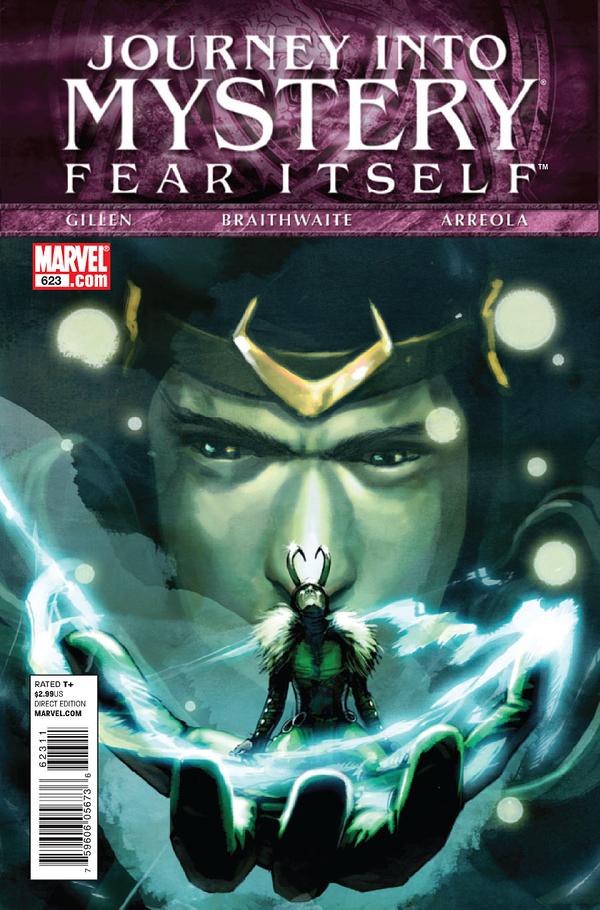 What is it? Loki is reincarnated as an adorable tween rascal who tries to convince himself (and everyone else) that he’s not inherently evil while orchestrating his own undoing.
What is it? Loki is reincarnated as an adorable tween rascal who tries to convince himself (and everyone else) that he’s not inherently evil while orchestrating his own undoing.
The Details:
This run is marvelous, delightful, innovative comics writing.
The seeds for this story were sewn in the Siege event, where Loki experience a rare moment of regret and gave his life to help the assembled heroes defend Asgard (and the world) from The Void. A short time later, Thor discovered a boy on the streets of Paris who was clearly his brother but had no concrete memories of being the Norse God of Mischief.
After that story, Thor’s title relaunched with a new #1 as The Mighty Thor while its issue numbering jumped back to its original title, Journey Into Mystery, where Loki was the lead character.
This was an audacious move, considering that at the same time Loki was starring as the main villain of The Avengers movie. Yet, that might have been the spark that really ignited Kieron Gillen’s run – a greater-than-ever interest in Loki thanks to Tom Hiddleston’s charming turn combined with a blank-slate Kid Loki starring as a featured character.
Writer Kieron Gillen penned his first self-contained opus in Journey Into Mystery. The story was an epic tragedy masquerading as farce. We watch a charming young Loki adopt a hellhound and be granted a companion in his adventures. Then, just as you’ve fallen completely in love with this God of Lies who mostly tells the complicated truth, the crash of everything around him can be described as both shockingly abrupt and obviously earned. The run is illustrated by a murderer’s row of fantastic artists including Doug Braithwaite, Mitch Breitweiser, Whilce Portacio, Carmine Di Giandomenico, Alan Davis, and a single issue by the extraordinary Stephanie Hans (who provided covers for most of the run).
If there is one downside to this run, it’s a certain twee cuteness to Gillen’s scripting that could be compared to Neil Gaiman’s recent prose. If that’s a turnoff for you, it wasn’t for a bevy of other fans, especially among new and young readers and on social platforms like Tumblr.
With the official Kid Loki material contained to 33 issues (a decidedly average-length omnibus), would it be too much to hope that this would charitably include the 11 issues of Gillen’s spectacular and brief Thor run from #604-614? The story is so very good, contains many threads picked up by his run on Journey, and would complete the abrupt end of the Thor by JMS omnibus. Weirdly, Kid Loki’s first appearance is actually in the next arc of Thor, by Matt Fraction, in #615-621. Fraction’s run on Thor was pretty miserable, but that’s only another six issues – plus, it creates a continuous run of #604-645 in this single book.
Maybe it could happen!
Chances we see this in 2017? ![]() This ranking is a major comeback from last year, when it almost dropped off the survey! It could be a case of Complete Collections only temporarily sating the thirst for seeing this great material collected under a single banner (one is already out of print). With Gillen’s stock continuously rising (notably, outside of Marvel) and us about to see more of Loki in Thor: Ragnarok, it wouldn’t be a shock to see Marvel cash in on both of them with this volume.
This ranking is a major comeback from last year, when it almost dropped off the survey! It could be a case of Complete Collections only temporarily sating the thirst for seeing this great material collected under a single banner (one is already out of print). With Gillen’s stock continuously rising (notably, outside of Marvel) and us about to see more of Loki in Thor: Ragnarok, it wouldn’t be a shock to see Marvel cash in on both of them with this volume.
Want to read it right now? You only need a pair of Journey Into Mystery by Kieron Gillen Complete Collections – Volume 1 and Volume 2 – to read the main Kid Loki run complete with its crossover issues. The Thor guide explains how to pick up issues #604-621 that precede it.
![]()
#17. Ghost Rider (1973), Vol. 1 (of 2 or 3)
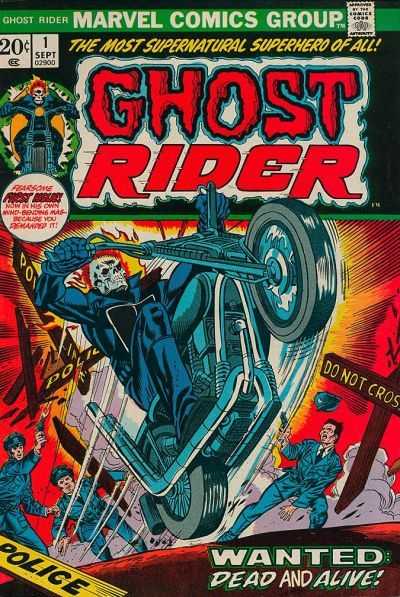 Last Year’s Rank: #31
Last Year’s Rank: #31
Possible Contents: Marvel Spotlight #5-12 & Ghost Rider, Vol. 1 #1 through 28 or 34. Potentially also Daredevil #138, Marvel Team-Up #15, and Marvel Two-in-One #8.
What is it? A trick motorcycle rider sells his soul and bonds with a demon, turning him into a blazing spirit of vengeance by night and a a vagabond wandering the Western states by day.
The Details:
Given the major wins in color reprints over the past few years (i.e., Super-Villain Team-Up, Power Man, Spider-Woman), Ghost Rider is now officially Marvel’s oldest starring superhero ongoing series without a color printing to its name.
Ghost Rider was part of the wave of Comics Code side-stepping demonic heroes I highlighted earlier in the survey while covering Marvel Horror. Stunt-driver Johnny Blaze knowingly made a pact with the devil (well, Mephisto, but same difference) to save his step-father’s live.
When Mephisto skirts the deal and calls to collect Blaze’s soul he’s rebuffed by the power of love (not joking). Instead of claiming a soul, Mephisto takes his revenge by inextricably pairing a demon spirit named Zarathos to Blaze to do the devil’s bidding.
All of that is detailed in the early portion of this run in Marvel Spotlight (directly following the introduction of Werewolf by night), with the battle over Blaze’s soul spilling into the beginning of his own title. The result was a peculiar hero – Blaze was mostly on the run from the devil and from authorities, turning to Ghost Rider at night. As his series progressed, the line blurred between Blaze and Ghost Rider in a similar fashion to early Hulk stories where it took a while for anger to be enough to conjure the green giant. Eventually, Blaze can summon the Rider at will.
While this isn’t the strongest material, it is certainly of interest to collectors who have never before had access to it in color. I don’t claim to be in-the-know about this at all, but the absence of color Ghost Rider reprints could have to do with a 2007 lawsuit by co-creator Gary Friedrich, who explicitly sought additional royalties from Marvel for the character. Sure, Ghost Rider has appeared in a pair of movies since then, but it’s not Marvel who would be paying out the royalties there – as they would on collections. That was resolved in 2013 – perhaps clearing the way for some color collections?
It makes sense for this volume to push as far as #34, as the next issue marks a significant creator change.
Chances we see this in 2017? ![]() This is Marvel’s oldest legacy superhero title without a color reprint of its 1970s material, and I think 2017 will be the year to finally correct that. But will it be with an Omnibus? Even with the lawsuit no longer as a barrier, Marvel has seldom gone straight to Omnibus with material that could instead be initially issued in Masterworks format. However, a trio of those rule-breaking examples are Tomb of Dracula, Werewolf By Night, and the new run on Master/Deadly-Hands of Kung Fu – finite but lengthy runs of non-traditional superheroes that it would take 5-10 years to drip out in annual Masterworks. If any other book qualifies, it’s Ghost Rider!
This is Marvel’s oldest legacy superhero title without a color reprint of its 1970s material, and I think 2017 will be the year to finally correct that. But will it be with an Omnibus? Even with the lawsuit no longer as a barrier, Marvel has seldom gone straight to Omnibus with material that could instead be initially issued in Masterworks format. However, a trio of those rule-breaking examples are Tomb of Dracula, Werewolf By Night, and the new run on Master/Deadly-Hands of Kung Fu – finite but lengthy runs of non-traditional superheroes that it would take 5-10 years to drip out in annual Masterworks. If any other book qualifies, it’s Ghost Rider!
Want to read it right now? You’ll need to enjoy it in black and white! Visit the Ghost Rider guide for more intel.
![]()
#16. X-Men: Mutant Massacre Aftermath
AKA Old Soldiers AKA Before the Fall AKA omg plug this gap please
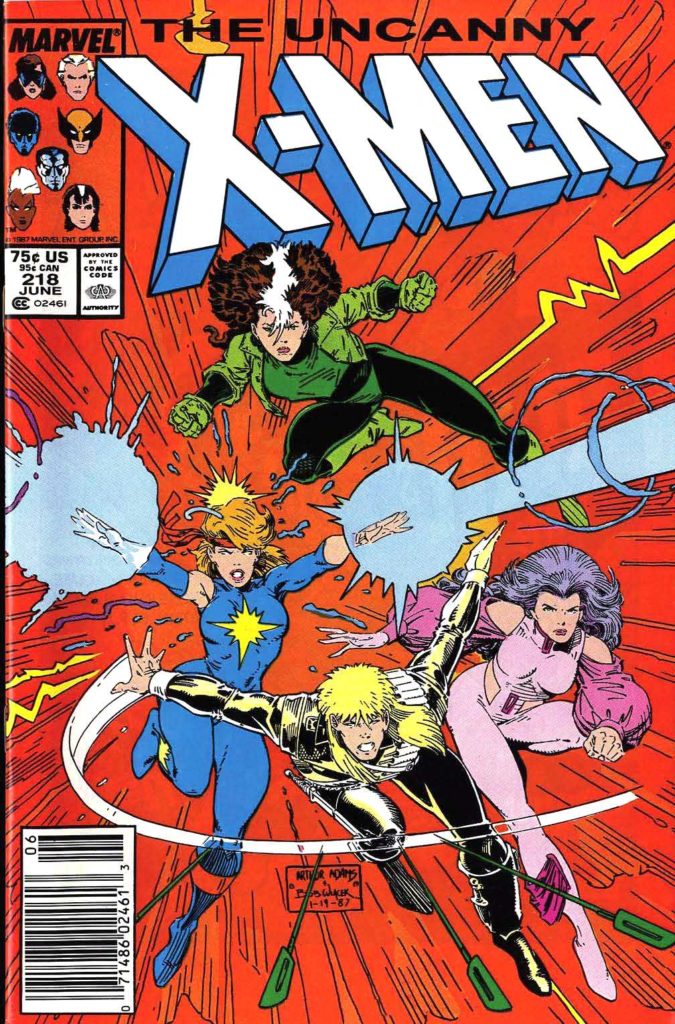 Last Year’s Rank: None! Debuting at #16
Last Year’s Rank: None! Debuting at #16
Probable Contents: Uncanny X-Men #215-219 & Annual 11, X-Factor #12-17 & Annual 2, and New Mutants #47-54 & Ann 3
Possible Contents: Some or all of the following – Mephisto vs. X-Factor, Mephisto vs X-Men, Spiderman and Wolverine #1, Marvel Fanfare #38 (Rogue/Dazzler backup), X-Men vs Fantastic Four #1-4, X-Men vs Avengers #1-4, Fallen Angels #1-8, and Marvel Super-Heroes #1 (Magik story)
What is it? Marvel’s trio of mutant teams have a series of unrelated adventures between Mutant Massacre and Fall of the Mutants, including one of the last remaining gaps of reprinted issues in Uncanny X-Men.
The Details:
How does a book of odds and ends debut at #16 with a bullet? In this case, it’s all about outside influences.
First, there’s the matter of color reprint gaps in Chris Claremont’s run on Uncanny X-Men. We’re down to just a pair of gaps, both the size of just a single trade collection. This is one.
Second, there’s Claremont’s run in oversize format. When this survey launched in 2013 we were five or more books away from completing it (since then we’ve received Uncanny X-Men Volume 2, Volume 3, and X-Men: Inferno Prologue). As of this survey, we’re down to two or three. This is one
Third, this year voters communicated their choices a little more than they had in the past. In discussing potential votes, this gap in Uncanny X-Men and how it could be made into an Omnibus-sized volume came up repeatedly despite the fact that this will never truly be an omnibus – X-Men event books are omnibus sized, but have never historically carried the label.
So, what’s contained in this elusive set of material?
In Uncanny X-Men, it was a new post-Massacre team that was never united during the run. With Storm, Wolverine, and Rogue as the core surviving members, #215 was the first issue where the new trio of Dazzler, Psylocke, and Longshot were codified as members. First, the team is fractured as Storm pursues the possible death of Jean Grey’s sister with Wolverine while Rogue flies the rest of the team and their injured team members to Muir Island for treatment. As the team recovers at Muir Island, Dazzler encounters Juggernaut in a nearby village.
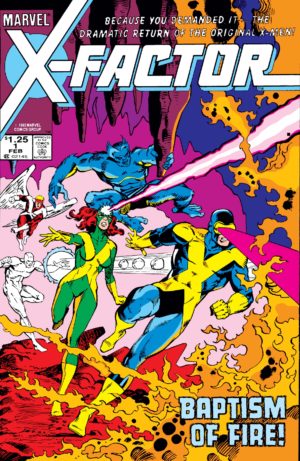 Really, these issues should have been included with the slim Mutant Massacre oversized hardcover, as they all address the continuing fallout of those events through the Marauders tangling with Havok and Polaris in #219 before the entire team is assembled for Annual 11.
Really, these issues should have been included with the slim Mutant Massacre oversized hardcover, as they all address the continuing fallout of those events through the Marauders tangling with Havok and Polaris in #219 before the entire team is assembled for Annual 11.
The accompanying X-Factor and New Mutants issues are unrelated, but also fill the same gap. X-Factor’s story would fit better collected alongside their Fall of the Mutants issues, but if you’ve seen the size of that story’s hardcover you know it couldn’t possibly fit another seven issues!
The tie-in material is interesting. After X-Factor #12 but before UXM #215, both X-Factor and X-Men encounter Mephisto in his mini-series (they are issues #2-3, respectively). Weirdly, this is the first chance to see the new six-character X-Men line-up in action in this period. Then, Wolverine (from #216) and Spider-Man have their one-shot run-in while Dazzler and Rogue (from #218) appear in a backup to Marvel Fanfare #38.
After #219, X-Men vs. Fantastic Four branches off with the reunited team. It starts as cooperation but quickly turns to combat no thanks to Magneto suspicions of Mr. Fantastic. From there, the X-men plunge directly into another conflict in X-Men vs. Avengers, when the Avengers stop portions of Magneto’s Asteroid M from making a dangerous impact. Clearly Magneto has to go! Finally, Annual 11 is the X-Men’s last appearance before the Fall of the Mutants run-up stories begin in #220.
Meanwhile, Fallen Angels branches Sunspot and Warlock off from New Mutants as of #52 and Boom Boom from X-Factor after #17, while Magik detours from Fallen Angels #2 through a story in Marvel Super-Heroes #1 back to New Mutants in #53. That puts the remainder of Fallen Angels chronologically at the end of this material. It has been collected in premiere hardcover, but if it isn’t captured in oversized format here we’ll lose our chance to have a complete run of everything X-Men before 1991 in oversize format (except Excalibur).
Whew.
Chances we see this in 2017? ![]() On one hand, an oversize X-Men book that fills a gap is a license to print money for Marvel. On the other hand, the New Mutants run is already cover and the X-Factor run could be saved for a future X-Factor omnibus that starts with #1, which leaves us with a tiny handful of Uncanny X-Men issues. That handful could appear in a standalone TPB or, more likely, hit an Epic Collection that also included the various supporting mini-series content. Either way, I do believe 2017 will be the year we finally find out!
On one hand, an oversize X-Men book that fills a gap is a license to print money for Marvel. On the other hand, the New Mutants run is already cover and the X-Factor run could be saved for a future X-Factor omnibus that starts with #1, which leaves us with a tiny handful of Uncanny X-Men issues. That handful could appear in a standalone TPB or, more likely, hit an Epic Collection that also included the various supporting mini-series content. Either way, I do believe 2017 will be the year we finally find out!
Want to read it right now? Too bad! Well, not entirely – the Uncanny X-Men issues are covered in b&w and sporadically in color, X-Factor is covered in b&w, and New Mutants appeared entirely in a Classic volume. See the linked guides for more info.
![]()
Journey Into Mystery Omnibus should also potentially include the Siege: Loki one-shot by Gillen and McKelvie, especially if you’re talking about including his Thor issues. It sets up the stuff involving Mephisto and Disir, and explains Loki’s motivations for his actions in the Siege event that lead to his death and ressurection. And it’s a damn good comic.
Thanks for the catch! It’s not collected with the Completes (or, at least, not listed in their contents – I have the original HCs, so I cannot check), so it’s not guaranteed to show up unless Marvel shows some imagination in re-collecting this should the time ever come.
All the more reason to start with that earlier Gillen material, I say.